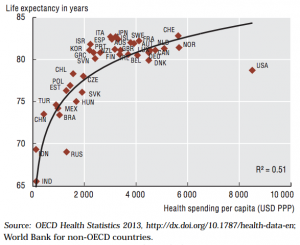I love Pandora. There are a ton of music apps out there, but Pandora is my tried and true. It always knows what I want to hear and after yet another great ‘90s hit, I often find myself thinking, “Well done, Pandora. Well done.” And despite the questionable relevance of a song every once in a while, 9 out of 10 times Pandora will know that I much prefer Kendrick Lamar to Justin Bieber (sorry Beliebers).
Now, what if social care providers knew their client needs just like Pandora knows our music preferences? By taking a holistic health and social care approach, case managers can create a personalized health plan to match individual needs. This way, providers can make sure you’re not receiving Bieber-care, when what you really need is Lamar-aid. IBM’s Smarter Care approach paves the way to make this possible.
Smarter Care coordinates systems of health and social care for more efficient and less costly outcomes. Data and analytics drive this process, linking social determinants, clinical factors, and lifestyle choices that lead to effective, personalized care.
IBM’s approach comes at an important time. Even though healthcare costs are skyrocketing, our measures of health and well-being are falling short, especially when compared to other wealthy, industrialized nations (see OECD/World Bank graph). There are many factors feeding into this dilemma, one being that our health and social care systems are interdependent, yet often siloed and competing.

The Camden Coalition of Healthcare Providers – an initiative to improve the quality, capacity, and accessibility of the healthcare system for vulnerable populations in the city– uses big data to pinpoint “hot spots:” places with a high density of people with complex social-behavioral and medical needs. After analyzing data from three major hospitals, the Coalition found that 20 percent of the patients were responsible for 90 percent of the emergency department costs. By providing and coordinating the medical care and social services these patients needed, the coalition reduced the cost of their care by almost half in some cases.
“Being able to capture, manage and use all forms of data from all relevant sources,” IBM explains in a report, “is what enables the types of personalized insights and care that can make a difference.” The idea is to create a “system of systems” where private and public stakeholders come together to coordinate care at unprecedented levels.
For example, Memorial Sloan Kettering Cancer Center and IBM are co-developing cognitive capabilities so that oncologists everywhere will be able to make better informed treatment decisions with their patients.
The whole idea is for organizations to use data and analytics to better understand their patients and communities, leading to more efficient, individualized, and engaged care at lower costs. IBM has identified five common drivers that enable successful outcomes:
- Identifying and influencing populations and recognizing intervention opportunities.
- Driving evidence-based and standardized care planning.
- Assessing and engaging individuals and stakeholders for the creation of individualized care plans.
- Delivering care and monitoring progress based on clinical and social requirements.
- Applying new insights from interactions and outcomes to enable continuous transformation.
This personalized insight depends on the segment of population and their respective risk profile. Healthy, low-risk patients, for example, would focus on prevention, education, and engagement, while those with early clinical symptoms or active disease would emphasize care management and the delivery of the right services, programs, and treatments.
A whole host of stakeholders – governments, social program agencies, medical practitioners, healthcare insurers, and more – can benefit from the integrated and individualized services of Smarter Care. Learn more here.

In times of economic uncertainty, smarter government is a mandate. When information can be analyzed and presented more effectively, the result is better decision making, reporting and insight. For more information on how to use analytics to deliver better services to citizens, check out IBM’s Analytics to Outcomes group on GovLoop.
Photo credit: Flickr.com: https://www.flickr.com/photos/59937401@N07/.





[…] facing healthcare professionals. One example? Matt Garlipp, our current GovLoop Research Fellow, shared how IBM’s Smarter Care initiative coordinates disparate healthcare systems to create more […]